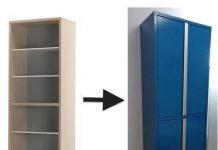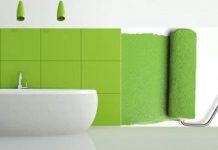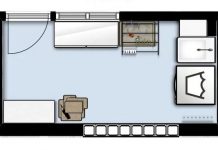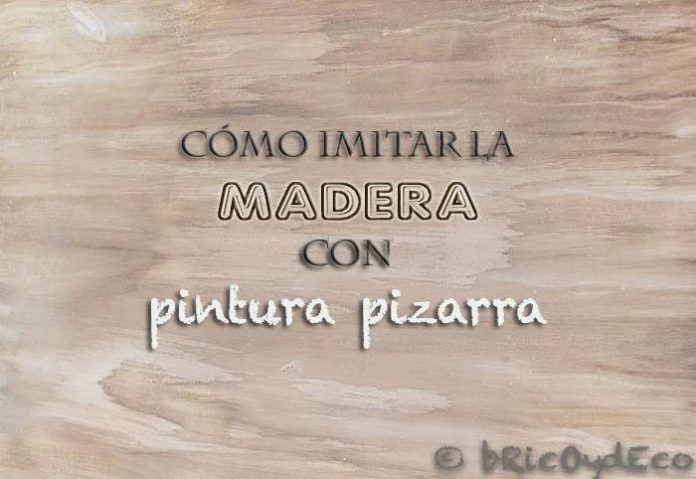
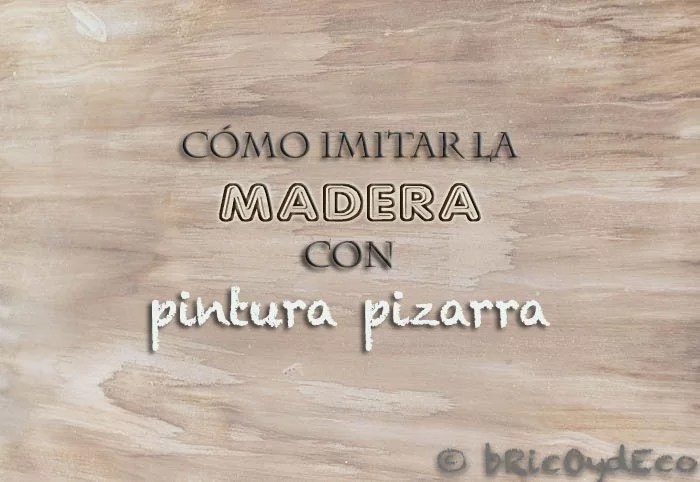
We are used to customizations and tuning of wooden furniture with chalk paint, but did you know that it is also possible to imitate wood with chalk paint? Discover how to do it in a simple way, with materials that you can find very easily and without the need for a veiner.
The chalk painting It is one of the most versatile paints that exist today, not only does it allow us to change the appearance of furniture and objects, but we can also create different effects and finishes with it (stripping, aged, industrial…). It is common to use this type of paint to color and rejuvenate old wooden furniture, but it is also possible to imitate wood with blackboard paint and create a more natural effect than using other types of paints and veiners.
UPDATE: In this link you can see the before and after of a table in which I have created this wood effect on chalk paint.
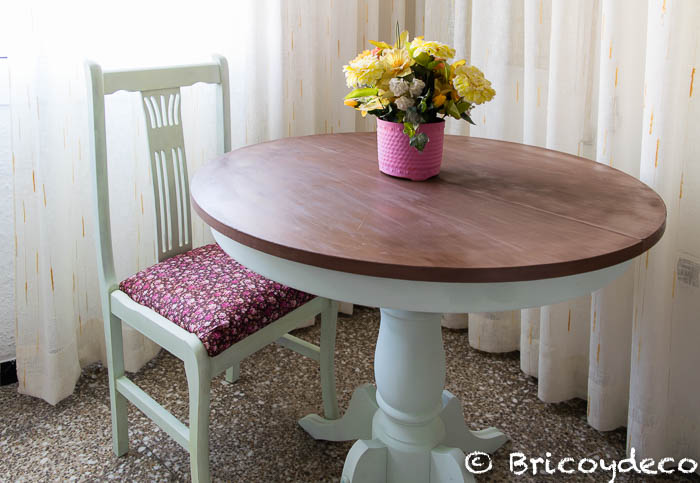
I particularly find very interesting the furniture that combines wood on the top or worktop and chalk paint on the rest. Below you can see several examples:
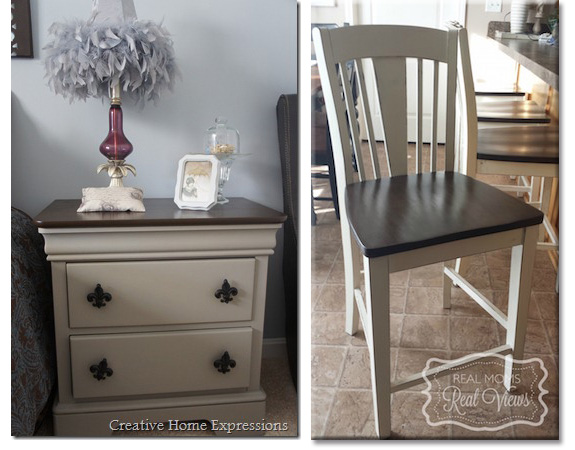
Images: Creative Home Expressions and Real Moms Real Views
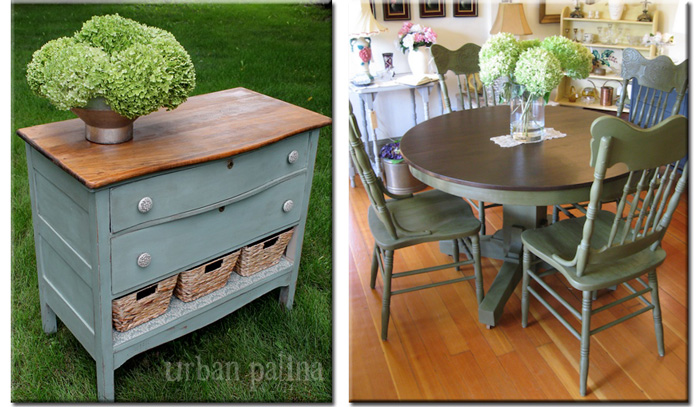
Images: Hometalk and Addicted2decorating
It is also an effect that also works with a current and contemporary style.
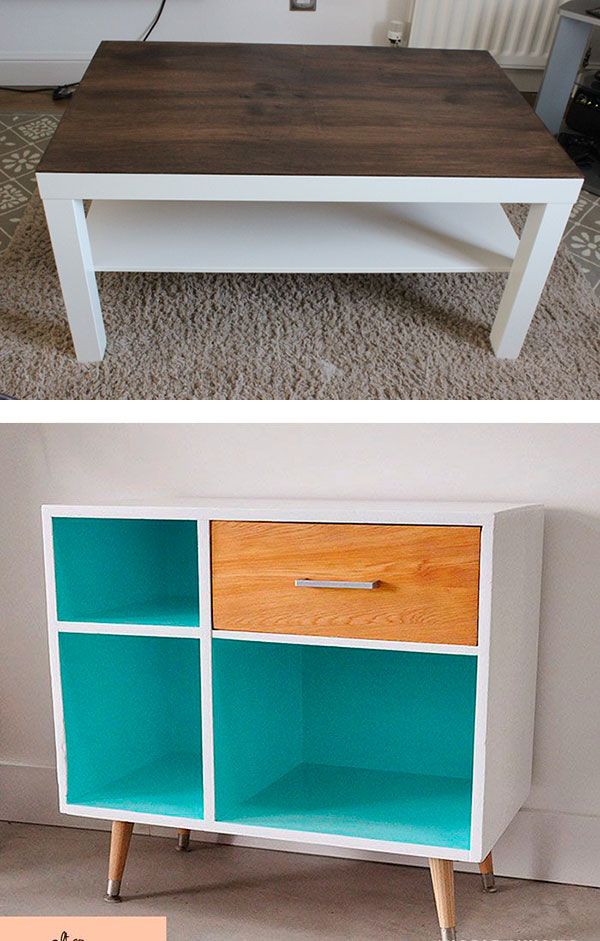
If you like this type of furniture and want to create a similar effect on melamine surfaces or surfaces that have been previously painted, these are the materials you will need:
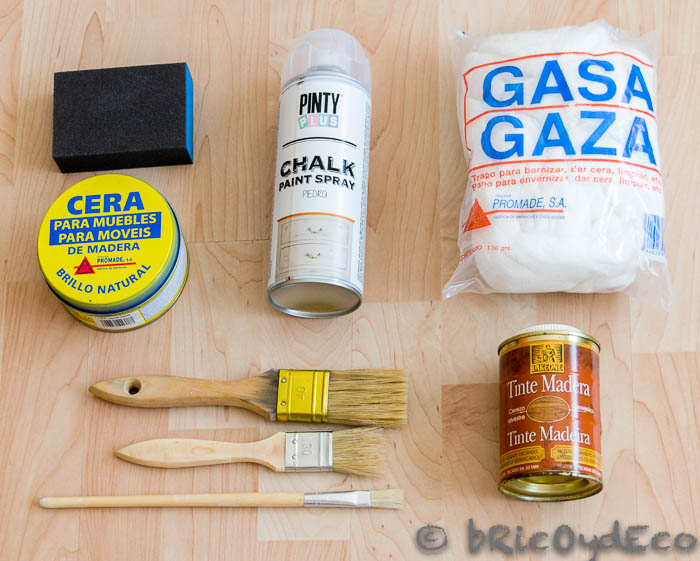
– Chalk spray paint. You could also use homemade chalk paint (you can see my favorite recipe at this link), but I mainly recommend spray chalk paint because we will achieve a much more realistic wood effect by not leaving any type of brush or roller mark. The chosen color must be light but not white, for example a cream or stone gray like the one I used for the step by step.
– Water-based wood stain. It is very important that it is a water-based dye since chalk paint is also water-based. Remember that in my post about primer I told you that different bases should not be mixed because they do not go well together.
– Different size stirrersI have used 4 and 3 centimeters and a flat brush.
– fine grit sandpaper.
– Colorless wax for furniture.
– cotton doll.
Spray chalk paint can be purchased online at this link and the rest of the materials can be easily found at any DIY center.
Once we have gathered all the materials, we will give the following steps to achieve a wood effect with chalk paint:
1st.- Prepare the surface. First of all, we will clean the surface with methylated spirit to remove dirt and product remains. In the event that we are going to paint on melamine, it is not necessary to sand or apply primer, since I have verified that the finish is much more uniform if it is not previously sanded and that the adherence of the paint to the chalk to the melamine is very good. Below you can see the board that I used as an example:
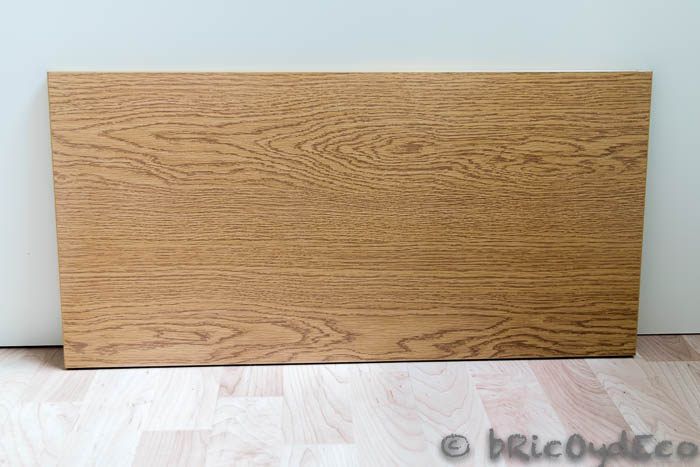
If we are going to create this effect on an already painted surface, it will be necessary to sand in case the paint does not have a uniform finish.
2nd.- Paint with chalk spray paint. To obtain a good result, we must shake the can for 3 or 4 minutes and spray at a distance of about 25/30 centimeters to avoid accumulations of paint (sprinkles), keeping the can in a vertical position or with a slight inclination so that they do not occur. drops. With the hand we will make a back and forth movement (as if we were dancing a waltz) from left to right and from top to bottom.
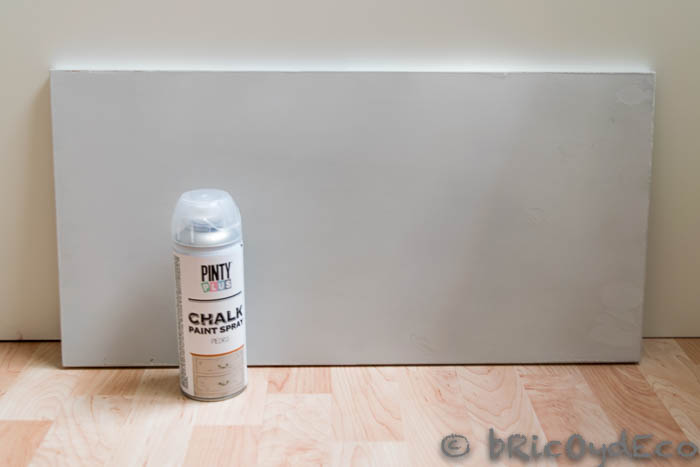
If with a first coat we do not completely cover the surface, we will give a second coat once the first has dried (about 30 minutes). We will achieve a better finish if we give several thin layers of paint than one thick one.
3rd.- Apply a first coat of wood stain. Once the chalk paint has completely dried (better to wait an hour), we will apply a first coat of undiluted wood stain. To do this we will choose the widest palette (in my case the 4 centimeters) and we will impregnate the ends with dye, then we will make a long stroke from top to bottom over the paint, until the brush runs out of dye. We will repeat this operation for the entire surface.
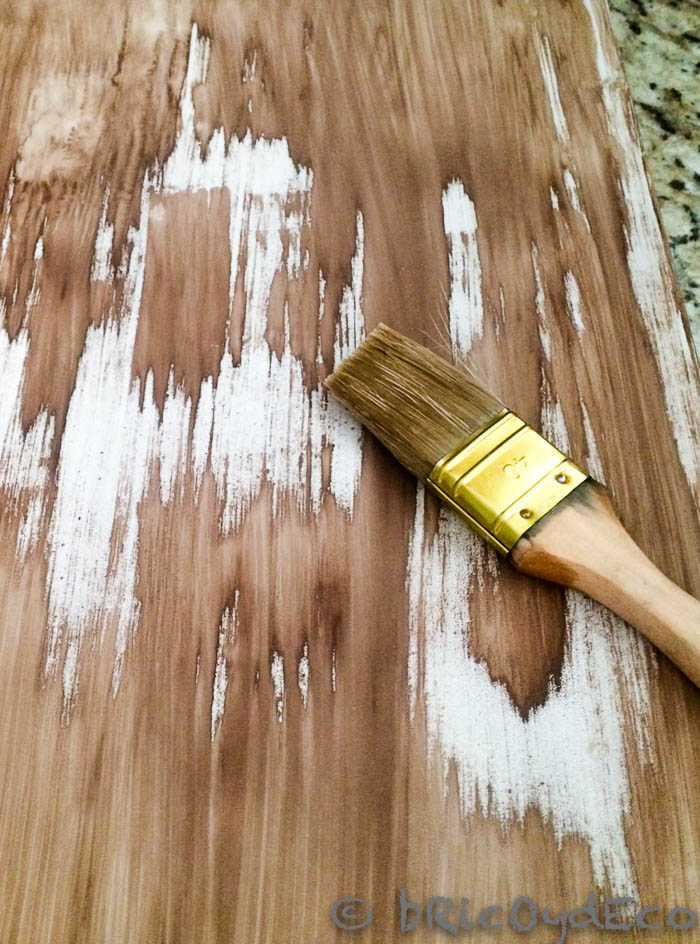
The normal thing is that we do not cover the entire surface with the dye, in fact it should be uneven, with more dyed areas and others without dyeing, as seen in the following image:
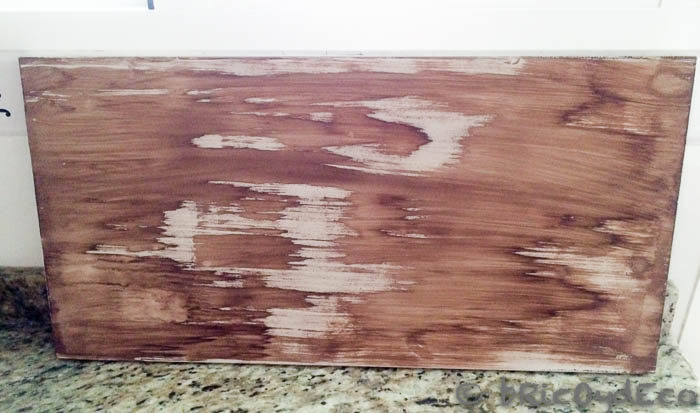
4th.- Apply a second coat of wood stain. Once the first layer of dye has dried (approximately 30 minutes), we will give a second layer of dye but this time diluted with 50% water, that is, we will mix one part of dye and another of water. To do this we will use a narrower brush (in my case the 3 centimeter) and we will brush strokes vertically until the entire surface is covered. Then we will remove the excess water with a cotton ball, in this way we will avoid the formation of bubbles that disfigure the final result and give an unprofessional appearance. Finally and before the dye is dry, we will pass a flat brush without any product to drag part of the dye and create thinner streaks.
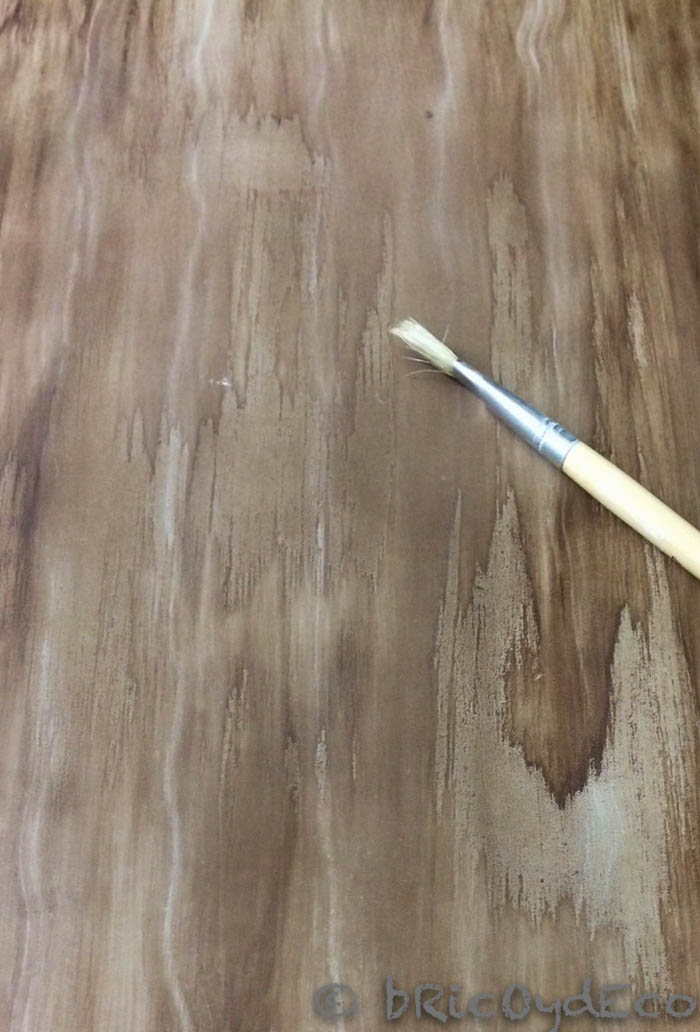
When everything is dry, we will pass a fine sandpaper so that the veining is more homogeneous.
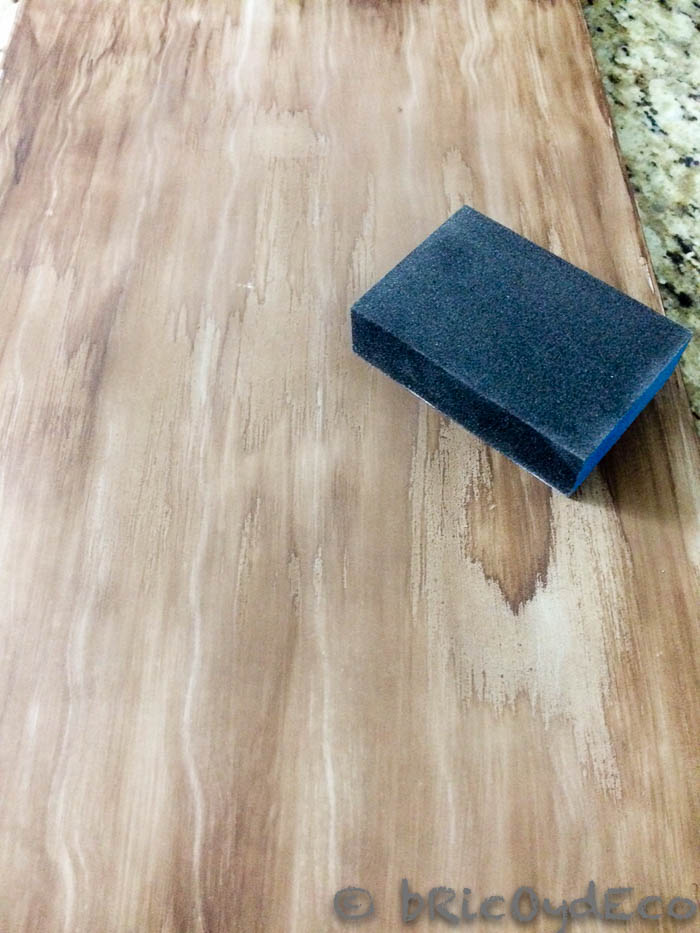
5th.- Give wax, polish wax. The last step will be to apply colorless wax to protect the result and give it an even more natural appearance (you can see the step-by-step on how to apply wax at this link).
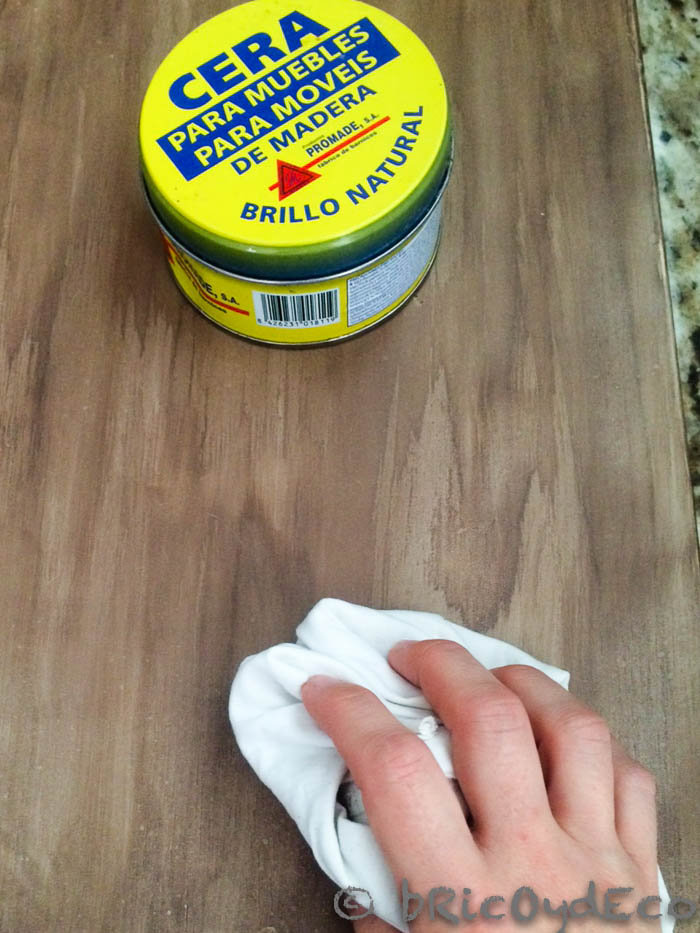
I recommend applying a minimum of two coats of wax and buffing with a rag, cotton wristband or tow.
After all these steps we have managed to imitate wood with chalk paint, providing a quite natural appearance. Also thanks to the chalk spray paint We have avoided brush strokes or roller marks, achieving a more realistic result as can be seen in the following image:
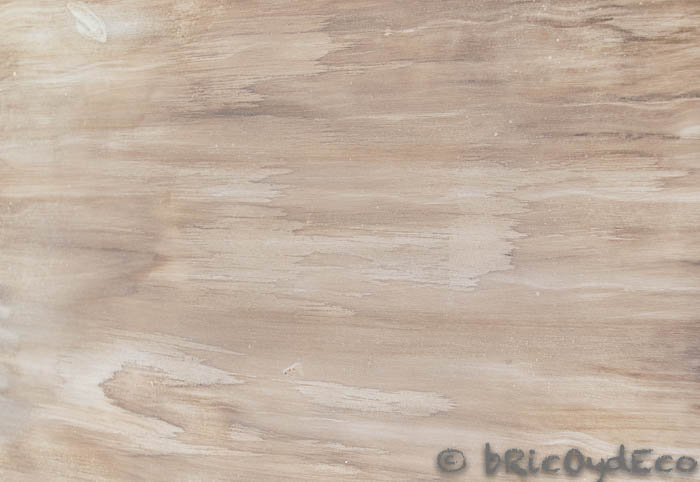
Although to explain this tutorial I have used a melamine board, this effect can also be created on previously painted or lacquered surfaces, or even on poor quality wood. Soon I will show you a piece of furniture that I am recovering with spray chalk paint and to which I am going to apply this technique, in this way you will be able to better appreciate the finish.
Did you know this technique? imitate wood with chalk paint? The advantage it has over other techniques is that no special grain or paint is needed to create a wood effect, with the same blackboard paint that you use for the rest of the furniture and wood stain you can imitate the grain with a result very natural, do you dare?
You can find more DIY and decoration tricks at Thank you very much for commenting and sharing!
[elfsight_youtube_gallery id=»1″]

